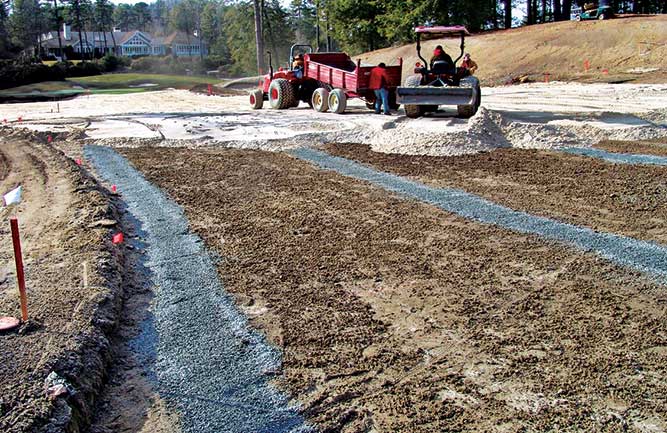Sand-capping depth based on moisture retention curves

Sand capping a fairway at Wade Hampton Golf Club, Cashiers, N.C. (Photo: Bert McCarty, Ph.D.)
Sand capping is done on golf course fairways and sports fields that drain poorly in an attempt to allow play to resume quickly after rainfall. Sand capping involves applying a relatively thick layer of sand to the top of an existing root zone. Superintendents use sand because it’s dominated by large free-draining pores that improve drainage and provide an acceptable root zone for turf growth.
Sand-capping depth can have a significant influence on the performance of turfgrass, yet no standard method currently is available for establishing an optimal depth. Several procedures to predict the optimum sand-capping depth have been suggested; most of these rely on soil moisture retention curves (SMRCs) to predict depth. SMRCs show how much water is held at various depths (or tensions) of a root zone.
In this research, procedures for estimating sand-capping depth were evaluated using hanging water columns. Suggested sand-cap depth ranged from 1.6 to 13.8-plus inches, depending on sand and procedure, although several methods provided similar capping depths. All procedures assumed the lower boundary of the sand cap to be saturated; meaning the tension at this point would be 0 inches. With this assumption, little air-filled pore space exists up to 6 inches above the lower boundary because of soil water rising through capillary action. Because of this, an alternative method for establishing sand-capping depth is suggested based on providing enough air space in the soil to accommodate rainfall.
The alternative method uses SMRCs to calculate how much free space the root zone has to accept more water. This method generally is much easier for end-users to understand, establishing the depth of sand needed based on anticipated rainfall and physical properties of the sand selected.
Philip Brown is a post-doctoral researcher at Clemson University, where he recently completed his Ph.D. with a focus on turfgrass science and soil physics. You may reach Philip at philipb@clemson.edu for more information.










